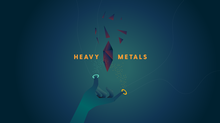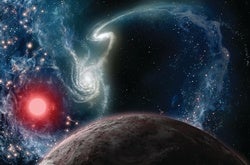 |
| January 12, 2023 |
Dear Reader,
This week, we’re zooming in on a never-before-seen facet of the quantum world. Our lead story details new work from scientists using the Relativistic Heavy Ion Collider (RHIC) at Brookhaven National Laboratory in Upton, N.Y. While using RHIC to map the inscrutable innards of atomic nuclei, the researchers managed to also observe something else for the very first time: quantum interference between two different kinds of subatomic particles. After wrapping your head around that one, read this week’s other featured stories, which include the discovery of a mysterious object near the Andromeda galaxy, the privacy-breaking perils of quantum computing, and more. |
| | Lee Billings, Senior Editor, Space & Physics | |
 |
| |
| |
| |
| |
| |
| |
| |
FROM THE STORE
 | | | |
| |
FROM THE ARCHIVE
 | | | |
LATEST ISSUES
 |
| |
| Questions? Comments?  | |
| Download the Scientific American App |
| |
| |




















